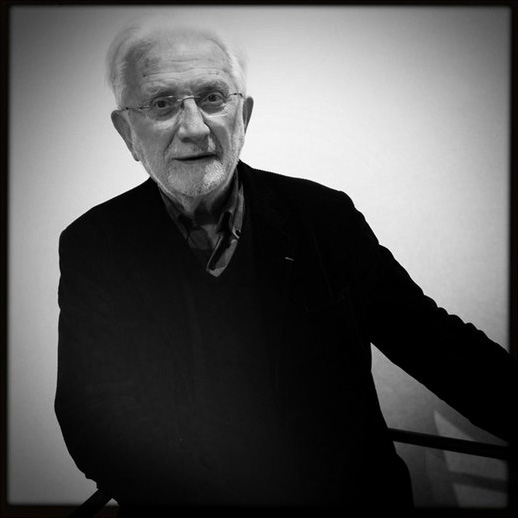Lucien Clergue was born in Arles. From the age of 7, he learned to play the violin. Several years later, his teacher revealed to him that he had nothing more to teach him. From a family of shopkeepers, he could not pursue further studies in a conservatory. In 1949, he learned the rudiments of photography. Four years later, at a corrida in Arles, he showed his photographs to Pablo Picasso who, though subdued, demanded to see others. Within a year and a half, young Clergue worked with the goal of sending photos to Picasso. During this period, he worked on a series of photographs of traveling entertainers, acrobats and harlequins, the
Saltimbanques. He also worked on a series whose subject was carrion.
On 4 November 1955, Lucien Clergue visited
Picasso in Cannes. Their friendship lasted near 30 years until the death of the Master. The book,
Picasso my Friend retraces the important moments of their relation.
Clergue has taken many photographs of the gypsies of southern France, and he was instrumental in propelling the guitarist
Manitas de Plata to fame. In 1968 he founded, along with his friend
Michel Tournier the
Rencontres d’Arles photography festival which is held in Arles in July. His works was presented during the festival from 1971–1973, 1975, 1979, 1982–1986, 1989, 1991, 1993, 1994, 2000, 2003, 2007. Clergue has illustrated books, among these a book by writer
Yves Navarre.
Clergue’s photographs are in the collections of numerous well-known museums and private collectors. His photographs have been exhibited in over 100 solo exhibitions worldwide, with noted exhibitions such as 1961,
Museum of Modern Art New York, the last exhibition organized by
Edward Steichen with Lucien Clergue,
Bill Brandt and
Yasuhiro Ishimoto. Museums with extensive inventory of photographs by Lucien Clergue include
The Fogg Museum at Harvard University and the
Museum of Fine Arts, Boston. His photographs of
Jean Cocteau are on permanent display at the Jean Cocteau Museum in Menton, France. In the US, the exhibition of photographs of Jean Cocteau was premiered by Westwood Gallery, New York City.
In 2007, the city of Arles honored Lucien Clergue and dedicated a retrospective collection of 360 his photographs dating from 1953 to 2007. He also received the 2007 Lucie Award. He is named knight of the Légion d'honneur in 2003 and elected member of the Academy of Fine Arts of the Institute of France on 31 May 2006, on the creation of a new section dedicated to photography. Clergue is the first photographer to enter the Academy to a seat devoted to photography.
Source: Wikipedia
(…) Until I saw Picasso…I lived in the most perfect solitude and did my work without thinking of anything beyond that. After seeing Picasso and being received by him in Cannes when he repeated: “I’ve never seen anything like it, I’ve never seen anything like it”, I thought, or rather I let myself be convinced that despite my 21 years the time had perhaps come to begin showing my work. -- Correspondence Jean Cocteau, Lucien Clergue
Lucien Clergue frequented Pablo Picasso for twenty years, being received on numerous occasions at his villa the California, in Cannes and at Notre-Dame-de-Vie in Mougins where he made his last portrait of the artist in 1971, two years before his death. Picasso, enthusiastic about Clergue’s images of dead animals and the circus children, considered him to be a greater photographer than
Henri Cartier Bresson, and complimented him by saying: Clergue’s photographs are the good Lord’s sketchbooks! Or again was quoted in one of Cocteau’s lettres to Clergue, dated 1956: Picasso told me… his complete admiration for your series
Stomachs.
“You could, he said, sign Renoir”.
Thanks to Picasso, the young photographer was able to meet not only Jean Cocteau, but also the historian and art collector
Douglas Cooper, who opened up his extraordinary collection of books and artworks to the young man, avid for visual stimulation. Picasso’s generosity to Clergue and his admiration for the work of the budding photographer resulted in many collaborations, notably Picasso’s illustration for the cover of
Corps mémorable in 1957, where Clergue’s images accompanied
Paul Eluard’s poems; or again, the poster for Clergue’s first exhibition in Cologne in 1958 and then the cover for the book
Poesie der Photographie in 1960.
Source: lucien-clergue.com
